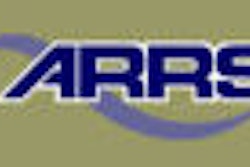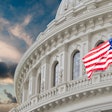It's been said that all business is about relationships. Recognizing this, companies actively nurture their client contacts, seeking ways to acknowledge and appreciate their interactions and transactions. Often this takes the form of fine dining, theater or sports tickets, resort trips, golf outings, free educational seminars, and other gifts at corporate expense. That is, unless the business you're in is U.S. healthcare.
"Healthcare is an industry where being nice to your customer can land you in jail," said Clark Silcox.
Silcox, general counsel at the National Electrical Manufacturers Association (NEMA), presided over a panel discussion during the 2005 RSNA in Chicago on the code of ethics adopted by the organization earlier this year. Joining Silcox in the briefing were Linda Wawzenski, deputy chief of the civil division for the U.S. Attorney's Office for the Northern District of Illinois; Tom Hoffman, assistant general counsel of the American College of Radiology (ACR); and Sheila Finnegan, a 12-year veteran of the U.S. Attorney's Office and now a partner with the Chicago law firm of Mayer, Brown, Rowe, and Maw.
The NEMA Code of Ethics was developed in 2004 to help medical imaging suppliers and customers understand their legal obligations, and to manage and avoid legal risk. The code, available for free on the NEMA Web site, is a concise, nine-part document with a frequently asked questions section covering interactions with healthcare providers.
The code represents the medical imaging industry's effort to ensure adherence to the government's antikickback and false claims laws, and provides guidance to companies on how to interact with customers such as radiologists, cardiologists, and orthopedists.
"The law applies equally to each side of the transaction: both vendors and physicians," Silcox said.
Likewise, the NEMA code provides valuable guidance to healthcare providers and professionals, as well as vendors and suppliers.
"In the healthcare arena, the microscope is on everybody: doctors, vendors, and technologists," Wawzenski said. "The only way you can have integrity in the system is if both sides of the transaction are prosecuted."
According to Silcox, entities or individuals may find themselves in violation of federal or state antikickback statutes if anything of value is offered or given. This is regardless of whether or not this causes a loss to items or services that may be covered under a federal or state healthcare program, such as Medicare or Medicaid.
"There doesn't have to be any direct loss proved; it's assumed in any kickback relationship," Wawzenski said.
For example, an account executive decides to pick up the cost of a round of golf for himself and a clinician at a hospital at which he conducts business. According to Wawzenski, one game of golf by itself is no big thing.
However, if other account executives with the firm are also picking up the golf tab, that company could easily pay for a couple hundred rounds of golf over the course of the year. If so, that would be a pattern, a corporate culture, of abuse, Wawzenski said.
The bottom line, according to Silcox, is that anything of value from a company to a customer raises a question for the U.S. Department of Health and Human Services Office of the Inspector General (HHS-OIG). If the HHS-OIG decides something warrants opening an investigation, that procedure alone can be harmful, personally as well as professionally.
"Just the intrusive process involved in opening a case file can be expensive for the person being investigated," Finnegan said.
Personal and professional bank records, billing records, and patient files can and will be examined. Interviews are conducted with colleagues, friends, and neighbors. Counsel will need to be retained and compensated. Subpoenas, depositions, and search warrants can all be used. And the HHS-OIG, according to the panel's consensus, is the junkyard dog of investigators.
Silcox noted that the U.S. Attorneys' Offices have established close ties with numerous governmental law enforcement agencies. In addition to the HHS-OIG, they work closely with the Federal Bureau of Investigation, Internal Revenue Service Criminal Investigation Division, the Drug Enforcement Administration, the Department of Defense, and state and local investigators.
"Once a kickback is found, all payments going forward are considered tainted from that point," Finnegan said. "The government will seek triple damages for each instance."
In addition to triple damages for each claim payment, the government can also assess a civil penalty of between $5,500 and $11,000 for each and every instance. This can quickly add up to a multimillion dollar fine, even for a relatively small practice.
The U.S. recovered $1.4 billion in fraud and false claims settlements and judgments for the fiscal year ending September 30, 2005, bringing total recoveries since 1986 to $15 billion, according to a Department of Justice (DOJ) press release. As in the last several years, healthcare accounted for the lion's share of fraud settlements and judgments, amounting to $1.1 billion, the DOJ said.
Civil fines, although substantial and crippling, are not the only penalty a vendor, healthcare provider, or healthcare professional may face. Criminal felony charges may also be brought, with the possibility of up to five years in prison and up to $500,000 in fines.
"Often, we'll file both civil and criminal suits," Wawzenski said.
A common myth among radiologists, according to Hoffman, is that because they don't refer patients, they have less to worry about than their clinical colleagues.
"Radiologists are not bulletproof," he said.
All it takes is one disgruntled employee, ex-employee, spouse, girlfriend, boyfriend, or competitor to take up a qui tam, or whistleblower, action against a practice. The whistleblower statute financially rewards persons who successfully prove that claims submitted to the government are false or fraudulent.
According to Silcox, attorneys actively seek such cases because they are responsible for most of the government's largest recoveries. Lawsuits initiated by whistleblowers under the False Claims Act qui tam provisions accounted for $1.1 billion of the $1.4 billion in fraud and false claims settlements and judgments recovered by the government in fiscal 2005. And the government pays out millions to those who brought the suits.
Hoffman recommends that every radiology practice have a documented compliance plan, with strict and defined penalties for noncompliance, in place. To assist in this effort, the ACR has developed and published compliance program guidelines for radiologists and radiation oncologists.
The document, which is available free to ACR members, serves as a blueprint for a practice's compliance plan. The ACR also has a copy of the NEMA Code of Ethics available for free download on its Web site.
Compliance with the NEMA Code of Ethics is voluntary for vendors, healthcare providers, and healthcare professionals. However, because the code has been created and endorsed by business and professional organizations, it provides prosecutors with an industry-authored benchmark for what constitutes fraud and abuse.
"Even though the NEMA code is voluntary, a prosecutor will look at it and use it to prove intent if a vendor violates it," observed Finnegan.
Conversely, because it has been adopted by vendors and practitioners, strict adherence to the code will make prosecution very difficult for an attorney, Wawzenski said. When it comes to situations that fall outside code definitions, the deputy chief U.S. attorney offered up the following advice:
"If there's any doubt, don't do it," she said.
By Jonathan S. Batchelor
AuntMinnie.com staff writer
December 19, 2005
Related Reading
Government response to escalating imaging costs, December 12, 2005
Whistleblower accuses radiologist of referral, lease kickbacks, July 19, 2005
As more referrers demand leases, rads hope for legal crackdown, May 5, 2005
New NEMA ethics code puts the kibosh on perks, April 8, 2005
Radiology group pays $2.5 million to settle alleged Medicare fraud, June 29, 2004
Stark II interim final rule leaves huge self-referral loophole, July 20, 2004
Copyright © 2005 AuntMinnie.com



















